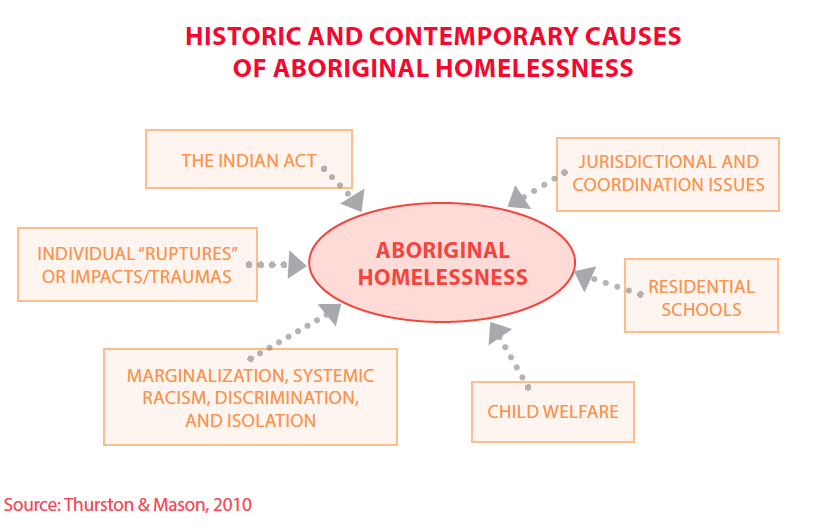The causes and impacts of Aboriginal homelessness are multiple, complex, and intersecting. To understand the current crisis of Aboriginal homelessness in Canada, we must consider how Aboriginal Peoples have been impacted by their historical relationships with the Government of Canada, organized religion, and mainstream society. While acknowledging the particularity of these experiences for different Aboriginal Peoples, Aboriginal communities across Canada have shared histories of discrimination, violence, and oppression that are directly related to the contemporary high rates of Aboriginal homelessness we see today. Contemporary experiences of disadvantage, such as landlord discrimination or limited access to healthcare, stem from historic practices that have placed Aboriginal Peoples at increased risk for homelessness.
“Aboriginal children – literally and symbolically – had their ethnicity and cultures beaten out of them.” - Patrick, 2014
Colonial conquests and European settlement in Canada, beginning in the 17th century, were predicated on the destruction of Aboriginal culture and assimilation of Aboriginal Peoples. Following the passing of The Indian Act of 1876, Aboriginal Peoples were relocated to reserves while Aboriginal children were placed in residential schools run by Christian churches (Menzies, 2010). The rampant physical, sexual, and psychological abuse of Aboriginal children in residential schools has been well-documented and has caused immeasurable suffering and trauma for generations (Truth and Reconciliation Commission of Canada, 2015). During the 1960s and beyond, government child welfare agencies continued to enact harmful practices by removing significant numbers of Aboriginal children from their homes and adopting/fostering them out to non-Aboriginal families (often referred to as the “Sixties Scoop”) (Brown, Prevost-Derbecker, & Andrushko, 2007).
The Indian Act, the reserve system, the residential school system, and the Sixties Scoop all functioned to fracture families and kinship systems, destroy communities, and dispossess Aboriginal Peoples of their lands, ways of life, human rights, and spiritual and cultural practices. The imposition of these systems, combined with the contemporary marginalization of Aboriginal Peoples, has resulted in overwhelming poverty and health problems for Aboriginal Peoples in Canada (Waldram, Herring, & Young, 2006).


